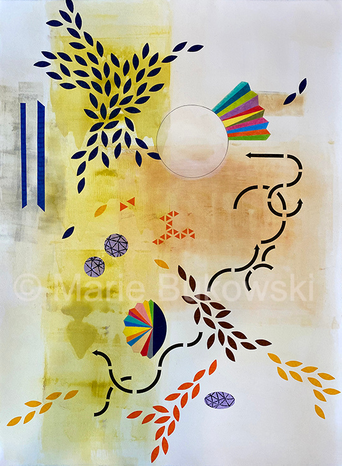|
This series of blog posts is centered upon the idea that to truly know an art, one should investigate every aspect of it. This mindset helps arts entrepreneurs sharpen their thinking by considering all the activities in the arts value chain, beyond the act of creating art, that are needed to deliver their offerings. This will result in making better-informed business decisions, as well as limit risk because only the most effective and efficient reasons for why, how, when and where to deploy resources make it through the evaluation process. In Part 1, I highlighted how changing a few of the attributes of implements used to create art can impact their utility and value. In this post, I’ll identify select elements to consider when marketing art or arts related items, and how it can impact your brand and interest in your offerings. Keep in mind these elements are presented in a vacuum because budgets, timelines, customer segments, etc., aren’t considered in this post. Mediums
These are the vehicles through which you will market your offerings. If you’re a new arts entrepreneur you should experiment with a variety of mediums to see which work best for you. Do what you can with the resources you have: word-of-mouth, flyers, press releases, email lists, social media, and a website are all cost-effective ways to reach potential patrons. Strive to think beyond traditional marketing when promoting your offerings and be as imaginative in marketing your art as you are creating it!
Three thoughts on email lists:
Message What is your message and is it consistent across all mediums and all markets? At a high level, companies have consistent messaging and branding no matter which medium they use or the country they are in. Fonts, logos, colors, experiences, etc., should always be the same as part of a cohesive brand. Anyone who has traveled abroad can acknowledge that multi-national restaurants have the same look and feel, even though the menu may vary slightly to reflect local tastes. Relevant to arts entrepreneurs might be descriptions of artwork, products, or accessories which require translations that are clear and accurately represent the artist’s intent or the value proposition of the item or service. My friend Marie, whose artwork is shown above, frequently has her art shown in Europe and she confirmed that the galleries with which she works painstakingly insure the translations are accurate. Finally, don’t forget about he aesthetic of the message. Are your materials sleek or busy, do they use attractive graphics or are they text-heavy, does it prompt patrons to learn more or glance away? Delivering the Message The best case scenario is when the message comes directly from you, because you will have total control in insuring your patrons are getting the information as you intend. If it’s being given by another party, such as a distributor, gallery, influencer or retailer, it increases the possibility for miscommunication so you should write your marketing materials to be clearly understood. This means using concise verbiage and avoiding obscure words that aren’t easily translatable. By considering these elements as your venture matures, you’ll be able to refine your message to effectively attract, keep, and grow your patron base. Thanks for reading, Nick
0 Comments
Leave a Reply. |
AuthorsLearn more about the authors. Archives
June 2024
Categories |



 RSS Feed
RSS Feed
